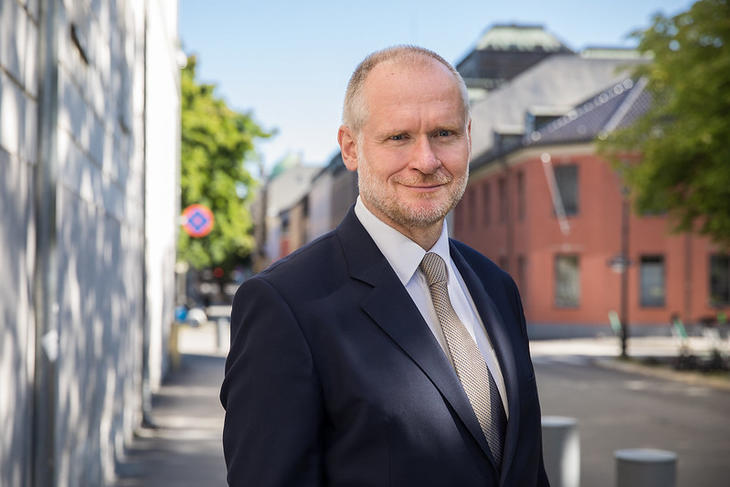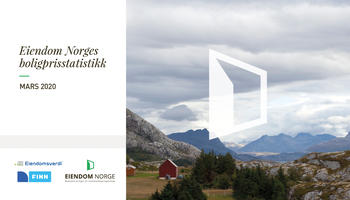
Forecast for the housing market 2021
Our forecast for the housing market is an increase of 7.5 per cent.
The forecast is based on an expected development in nominal prices through 2021 (12-month growth).
Real Estate Norway expects a broad rise in house prices in Norway next year. Some cities will have a stronger rise, which in total will give a strong rise in house prices in the country as a whole in 2021.
- No one has met with their forecasts for the housing market in 2020, which is due to the fact that the zero-interest rate decision from Norges Bank on 7 May was impossible to predict. The same applies to the measures against the corona pandemic which first gave a sharp fall in turnover and prices in March and April, and then with the zero interest rate which gave a broad and strong rise in house prices and activity throughout the country, says CEO of Real Estate, Henning Lauridsen.
- The interest rate has been the central driver in the housing market in 2020 and will also be in 2021. Other drivers in the housing market through housing construction, population growth and lending regulation are neutral. Low interest rates in combination and particularly low housing construction in Oslo mean that we expect a sharp rise in house prices here in 2021. Increased domestic consumption and a shift in consumption will probably also contribute to higher house prices.
- An element of uncertainty in 2021 is whether Norges Bank will raise interest rates earlier, as excessive house price growth creates a risk of financial instability. In our view, Norges Bank should consider raising interest rates earlier. Too strong a house price development is not healthy for the economy, says Lauridsen.
First interest rate increase
Norges Bank's interest rate cut as of December 2020 indicates the first rate hike in the first half of 2022. Statistics Norway, for its part, believes that interest rates will rise by 0.50 in mid-2021.
- It is likely that the key interest rate can be raised as early as the end of 2021. The question is whether this is enough to dampen the housing market in 2021. From experience, we know it can take some time before interest rate hikes hit the market, says Lauridsen.
- As it stands now, we expect a record strong rise in house prices in the first half of 2020. Over the autumn, we believe in a moderate development, as normal in the housing market for the second half, he says.
Moderate housing construction and population development
New home sales slowed down in the spring of 2020, but have since picked up. Commencement and completed housing are lower than in previous years, but still higher and more stable than compared with previous periods.
- The weaker sales of new homes will result in lower housing construction in the coming years, but at the same time population growth has also been reduced, which means lower housing needs, says Lauridsen.
- A challenge is that the distribution of population growth is not proportional across the country, and that much of the growth comes in central Eastern Norway, where housing construction has unfortunately been too low over time. This contributes to higher house prices, he says.
Lending regulation and increased domestic consumption
In December, Ministry of Finance Jan Tore Sanner (H) stipulated that a new lending regulation (formerly the Mortgage Regulations) will be more or less unchanged from 1 January 2021. The duration is four years with evaluation after two years.
- Even though we wanted relief in the lending regulation, especially for first-time buyers, we are satisfied that it was not tightened, and that in the coming years there will be a certain predictability in the supply of credit, Lauridsen says.
- Despite this, however, we believe that increased domestic consumption due to travel restrictions in combination with the zero interest rate increases the demand for housing in Norway, which results in higher housing prices, he says.
Forecasts for the big cities
Our forecasts for the 12-month growth from January to December 2021 for the big cities are:
Oslo: Increase of 9.5 percent
Bergen: Increase of 6 percent
Trondheim: Increase of 5 percent
Stavanger: Rise of 4.5 percent
- Lower start-ups in recent years in Oslo will result in fewer completed new homes in 2021 than in previous years. At the same time, there is a lot of construction activity in old Akershus, and the housing market in Oslo and old Akershus must be seen in context. The combination of low interest rates and low construction results in even higher housing prices in Oslo, says Lauridsen.
- Many years of large housing production have contributed to a large supply side in Bergen. It will still be lower at the beginning of 2021 than the three previous years. Housing production is declining, but population growth has picked up somewhat again. This in combination with the low interest rate, we believe contributes to a good increase in house prices in Bergen after several moderate years, says Lauridsen.
- Many homes have been built in Trondheim in recent years, but the pace of construction has now slowed sharply since the summer of 2020. Population and household growth has slowed and stabilized. Because of this, we believe house price growth will be somewhat weaker than in Bergen in 2021, says Lauridsen.
- Housing production in Stavanger has remained high after the fall in oil prices despite a sharp decline in population growth. But now population growth has picked up. We see at the end of November that the supply side of second-hand homes has declined markedly. The zero interest rate in combination with lower construction, population and household growth means that we now believe in an increase in prices in 2021, Lauridsen concludes.





